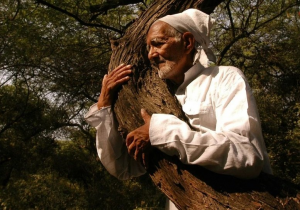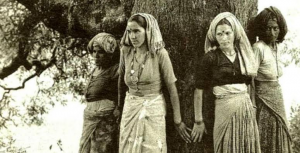Remembering the Environmental Legend Sunderlal Bahuguna
The 94-year old’s legacy continues to live in environmental movements today.
India’s leading conservationist and environmental legend Sunderlal Bahuguna breathed his last on Friday, May 21, in a hospital bed in Uttarakhand. The 94-year-old succumbed to Covid-19, after having lived a life, he dedicated to saving India’s environment.
He was the architect of the country’s biggest environment conservation movement and is lived by an ideology that can be summarised in four words: Ecology is the permanent economy. Flagbearer of the Chipko movement that fought to preserve the Himalayas, Bahuguna spent the last years of his life teaching children about the importance of conservation. He had been admitted to the All India Institute of Medical Sciences (AIIMS) in Rishikesh, Uttarakhand.
Bahuguna was a language, one that redefined the meaning of environmental conservation for many. Hints of his legacy are visible today in movements that resist falling of trees in New Delhi’s Netaji Nagar, where a local government project had initially proposed to cut down 1900 plus trees, and also in the fight to save the Aarey Forest in Mumbai’s Sanjay Gandhi National Park.
Also Read : Forest conservation: Two steps forward, four steps back
The stalwart’s legacy began in 1973, the year the ‘tree hugging’ or Chipko movement took off in Uttarakhand’s Gopeswar. At the time, Bahuguna worked with a group called Sarvodaya, that analysed floods that had occurred in the region the same year. Tree felling, apart from landslides and tectonic activities, was found to be at the core of the floods, and it was resistance by this group that stopped further trees from fell. A few years later, 27 women from the Reni village participated in the movement by hugging trees to prevent them from being cut off. This is considered to be one of the biggest turnarounds of the movement.
However, the movement received its loudest response after Bahuguna walked 5,000 kilometers across the Himalayas between 1981 and 1983, to protect some areas of the forest from deforestation. The movement ended with then Prime Minsiter Indira Gandhi passing a legislation to protect parts of the Himalayan forest.
Bahuguna also became the face of resistance against the Tehri dam project, which, he said, would lay harm to the river and the villagers around. The movement was initiated by VD Saklani in 1978. His go-to method of protest was fasting, which has led to a frequently occurring comparison with Mahatma Gandhi. “Fasting, as an act of protest is not to coerce someone into agreeing with me, but to reach people’s hearts,” Bahuguna had said in an interview years ago.
He was born in Madoda, a village near Tehri, to a family of government officials. He also participated in the national freedom movement in 1942, and worked as part of the Praja Mandal in Tehri, which demanded democratic rights. He later participated in Bhudan yatras, where his group worked to grant entry to Dalits in temples, send children to school, and reduce alcoholism. The movement gradually spread to all parts of Uttarakhand and continued for almost twenty years. Bahuguna’s resistances also had hints of women empowerment.
He believed that the Himalayas and the Ganga river were eternal to the development of the nation, apart from being symbols of sanctity. Bahuguna, indeed, became an idea, which many governments have failed to understand. The introduction of policies like the Environmental Impact Assessment, which has faced massive resistance from citizenry over its ‘anti-environment’ and ‘pro-industry stance’, points to the same.
“Politicians have a short-term vision. They are intent on making miracles happen in limited years to garner votes. However, a social worker has a long-term vision, and thinks of generations that succeed them,” Bahuguna believed.
